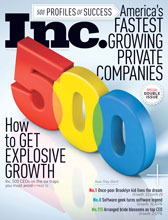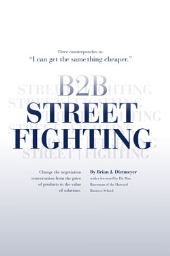 When I think of a street fighter, two words come to mind: lean and mean. I envision two lean opponents, stripped of all the trappings - the ring, the gloves, the fans and the corporate sponsors - testing their wits, wills and stamina anytime, anywhere.
When I think of a street fighter, two words come to mind: lean and mean. I envision two lean opponents, stripped of all the trappings - the ring, the gloves, the fans and the corporate sponsors - testing their wits, wills and stamina anytime, anywhere.
Many of you already think of business negotiation as a street fight: a ruthless, blood-spitting, no-holds-barred scenario where you throw a series of random punches and counter-punches without really knowing what's going to happen next. But unlike the old-school notion of a bare-knuckled brawler bullying or throwing a sucker punch at his opposition, or even a couple of ruthless thugs going at it in some back alley, my modern-day street fighter is trained, disciplined and prepared for his challenge. He's more like today's ultimate fighter who knows his opponent, can anticipate any kind of attack - kick, punch, take-down or elbow throw - and has both offensive and defensive moves at the ready. If we, as B2B street fighters, come to the negotiating table prepared, have a plan and are willing to do what it takes to execute that plan - a series of strategic punches and counterpunches - negotiation will no longer be a simple free-for-all.
The world of sales negotiation training appears to share the view that negotiating is unpredictable. Consider the lists and scripts books and training methodologies throw at you to supposedly help you practice your punches before the fight. Titles like: The 401 Things You Need to Know When They Say "No" and The 286 Tips That Will Guarantee Negotiating Success -- Act Now and We'll Send You Our Bonus 342 Tips.
But our lean B2B Street Fighter is in complete control and knows precisely what's going to happen. He leaves his gloves, his trainer, his mouthpiece and even the ring back at the gym and checks his mental baggage at the door. He doesn't use fancy footwork, smoke and mirrors, negotiating tips, tactics or tricks for verbal jousting, carefully planned scipts or buzzwords. He wins by being in charge of his faculties and being the most prepared. He concentrates on the fact-based data that gives him more control; assists in more rational decision making; prepares him to give better responses to the questions, arguments and pressure points that the other side may raise and; ultimately, helps him achieve better results. Our street fighter is confident and, in fact, courageous knowing that he can control the outcome of the negotiation.
And mean? Of course negotiating isn't about being ruthless, sneaky or cocky. But it is all about acquiring an unfair advantage: being more prepared than anyone else at the table to give customers what they really want, creating value for both sides and doing this long before anyone else is even thinking about it.
You're probably thinking, "sure, but no matter how tuned and toned and prepared I get, in the end, I never know what's coming my way, and the conversation always comes back to price." Well, I'm about to turn the inherent complexity of strategic B2B negotiation into a feature, instead of a liability, and show you how today's B2B street fighter can anticipate and prepare for 97% of what will happen in business negotiation.
Yes, 97%!!
To get what he wants, our B2B street fighter must do three things:
- His company: He must fight for his company as its representative at the bargaining table and change the conversation from the price of his products and services to the value of his solutions.
- His competitors: He must fight against his competitors and their reactive instincts to behave irrationally and give away portions of their value proposition.
- His customer: He must negotiatie with his customer to find the optimal solution to their business problem.
Would you like to know more? You may request an excerpt from the B2B Street Fighting book here.
Or, you may purchase the B2B Street Fighting book here.





